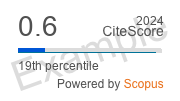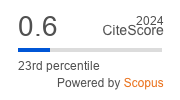Perfusion computed tomography in differential diagnostics of pulmonary consolidation areas of postinflammatory and malignant etiology in patients recovered from COVID-19-associated pneumonia
https://doi.org/10.29001/2073-8552-2025-40-3-131-139
Abstract
Introduction. The COVID-19 pandemic caused an increase in the number of patients with persistent pulmonary changes, characterized by long-term retention of areas of pulmonary consolidation. While standard computed tomography (CT) remains the primary diagnostic method, it has limited capability in differentiating between benign and malignant processes due to the nonspecific nature of their radiological features. Recently, with the advancement of new technologies in radiological imaging, it becomes possible to evaluate regional blood flow in various organs and tissues through specialized perfusion studies using CT and magnetic resonance imaging (MRI).
Aim: To assess the diagnostic significance of quantitative parameters of perfusion computed tomography, such as blood flow (BF), blood volume (BV), vascular permeability (PS), mean transit time (MTT), and time to peak (TTP), in differentiating post-inflammatory and malignant areas of pulmonary consolidation in patients recovered from COVID-19-associated pneumonia.
The retrospective cohort study included a group of patients (n = 41) aged 18 to 75 years with a history of COVID-19-associated pneumonia confirmed by positive PCR test results, with persistent clinical manifestations of post-COVID syndrome 12 weeks after discharge from the hospital. At the stage of in-depth clinical examination, all patients underwent CT of the chest organs, which revealed areas of lung parenchyma consolidation larger than 1 cm in size, which could not be unambiguously differentiated between post-inflammatory and neoplastic changes according to native and contrast CT. Perfusion CT was performed using a low-dose protocol (100 kV, 200 mA) on a 128-slice GE Optima CT660 computed tomography scanner with intravenous administration of 50–60 ml of iodine-containing contrast at an injection rate of 4.0 ml/s. The slice thickness was 5 mm with a scanning duration of 45–50 s. Material and Methods. The retrospective cohort study included a group of patients (n = 41) aged 18 to 75 years with a history of COVID-19-associated pneumonia confirmed by positive PCR test results, who exhibited persistent clinical manifestations of postCOVID syndrome 12 weeks after hospital discharge. These patients underwent perfusion CT as a part of an in-depth clinical follow-up. All patients received a chest CT scan, which revealed areas of pulmonary parenchymal consolidation larger than 1 cm that could not be definitively differentiated between post-inflammatory and neoplastic changes based on native and contrast-enhanced CT findings. Perfusion CT was performed using a low-dose protocol (100 kV, 200 mA) on a 128-slice GE Optima CT 660 scanner with intravenous administration of an iodinated contrast agent (50–60 mL) at an injection rate of 4.0 mL/s. The slice thickness was 5 mm, and the scan duration was 45–50 seconds.
Results. Statistically significant differences were found in vascular wall permeability and time to peak contrast enhancement between neoplastic and post-inflammatory consolidation areas: PS was 13.54 (5.71; 66.01) mL/100 g/min and TTP was 11.57 (7.19; 15.71) seconds for neoplastic lesions, compared to 5.30 (1.90; 10.63) mL/100 g/min and 32.55 (15.83; 38.28) seconds, respectively, for post-inflammatory lesions. Logistic regression analysis confirmed the high diagnostic efficacy of the model incorporating PS and TTP: the area under the ROC curve (AUC) was 87.5%, sensitivity was 80%, and specificity was 81.3%. TTP demonstrated the greatest contribution to differentiating the lesions: p = 0.004; OR = 0.888; 95% CI OR (0.81989; 0.96254), while PS showed moderate significance: p = 0.075; OR = 1.057; 95% CI OR (0.99445; 1.12421).
Conclusion. Quantitative parameters of vascular permeability and time to peak contrast enhancement have significant, statistically reliable diagnostic value compared to other parameters such as blood flow rate, blood volume, and mean transit time of the contrast agent. These parameters can serve for the differential assessment of pulmonary consolidation characteristics.
Keywords
About the Authors
M. M. KhafizovRussian Federation
Munavis M. Khafizov - Graduate Student, Department of General Surgery, Transplantology, and Radiology, Bashkir State Medical University.
3, Lenin str., Ufa, 450008
D. E. Baikov
Russian Federation
Denis E. Baikov - Dr. Sc. (Med.), Professor, Department of General Surgery, Transplantology, and Radiology, Bashkir State Medical University.
3, Lenin str., Ufa, 450008
L. R. Akhmadeeva
Russian Federation
Leina R. Akhmadeeva - Dr. Sc. (Med.), Professor, Department of Neurology, Bashkir State Medical University.
3, Lenin str., Ufa, 450008
References
1. Fabbri L., Moss S., Khan F.A., Chi W., Xia J., Robinson K. et al. Parenchymal lung abnormalities following hospitalisation for COVID-19 and viral pneumonitis: a systematic review and meta-analysis. Thorax. 2023;78(2):191–201. https://doi.org/10.1136/thoraxjnl-2021-218275.
2. Caruso D., Guido G., Zerunian M., Polidori T., Lucertini E., Pucciarelli F. et al. Post-acute sequelae of COVID-19 pneumonia: Six-month chest CT follow-up. Radiology. 2021;301(2):E396–E405. https://doi.org/10.1148/radiol.2021210834.
3. Zheng Z., Pan Y., Song C., Wei H., Wu S., Wei X. et al. Focal organizing pneumonia mimicking lung cancer: a surgeon's view. Am. Surg. 2012;78(1):133–137. URL: https://pubmed.ncbi.nlm.nih.gov/22273330/(09.07.2025).
4. Chen M.L., Wei Y.Y., Li X.T., Qi L.P., Sun Y.S. Low-dose spectral CT perfusion imaging of lung cancer quantitative analysis in different pathological subtypes. Transl. Cancer Res. 2021;10(6):2841–2848. https://doi.org/10.21037/tcr-20-3479.
5. Zhang H., Han H., He T., Labbe K.E., Hernandez A.V., Chen H. et al. Clinical characteristics and outcomes of COVID-19-infected cancer patients: A systematic review and meta-analysis. J. Natl. Cancer Inst. 2021;113(4):371–380. https://doi.org/10.1093/jnci/djaa168.
6. Guarnera A., Santini E., Podda P. COVID-19 pneumonia and lung cancer: A challenge for the radiologistreview of the main radiological features, differential diagnosis and overlapping pathologies. Tomography. 2022;8(1):513–528. https://doi.org/10.3390/tomography8010041.
7. Kundu K., Kumar A., Malik R., Sarawagi R., Khurana A., Sharma J. et al. The role of CT perfusion in differentiating benign versus malignant focal pulmonary lesions. Cureus. 2024;16(7):e63618. https://doi.org/10.7759/cureus.63618.
8. Huang C., Liang J., Lei X., Xu X., Xiao Z., Luo L. Diagnostic performance of perfusion computed tomography for differentiating lung cancer from benign lesions: a meta-analysis. Med. Sci. Monit. 2019;25:3485–3494. https://doi.org/10.12659/MSM.914206.
9. García-Figueiras R., Goh V.J., Padhani A.R., Baleato-González S., Garrido M., León L. et al. CT perfusion in oncologic imaging: a useful tool?. AJR Am. J. Roentgenol. 2013;200(1):8–19. https://doi.org/10.2214/AJR.11.8476.
10. Li Yang Z.G., Chen T.W., Chen H.J., Sun J.Y., Lu Y.R. Peripheral lung carcinoma: correlation of angiogenesis and first-pass perfusion parameters of 64-detector row CT. Lung Cancer. 2008;61(1):44–53. https://doi.org/10.1016/j.lungcan.2007.10.021.
11. Korablev R.V., Vasiliev A.G. Neoangiogenesis and tumor growth. Russian Biomedical Research. 2017;2(4):3–10. (In Russ.). https://ojs3.gpmu.org/index.php/biomedical-research/article/view/544.
12. Sergeev N.I., Izmailov T.R., Kotlyarov P.M., Lagкueva I.D., Solodky V.A. Perfusion computed tomography in determining the nature of focal pulmonary lesions: clinical and statistic analysis. Siberian Journal of Oncology. 2020;19(4):24–32. (In Russ.). https://doi.org/10.21294/18144861-2020-19-4-24-32.
Review
For citations:
Khafizov M.M., Baikov D.E., Akhmadeeva L.R. Perfusion computed tomography in differential diagnostics of pulmonary consolidation areas of postinflammatory and malignant etiology in patients recovered from COVID-19-associated pneumonia. Siberian Journal of Clinical and Experimental Medicine. 2025;40(3):131-139. (In Russ.) https://doi.org/10.29001/2073-8552-2025-40-3-131-139





.png)





























